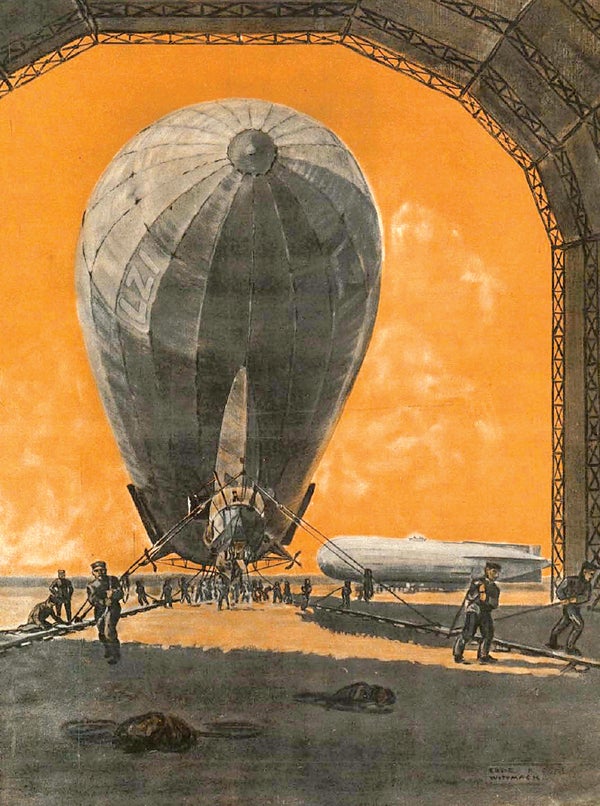1966
Soft Landing on the Moon
“Six hundred miles from the site where the Russian spacecraft Luna 9 made the first controlled landing on the moon in February, the U.S. spacecraft Surveyor 1 touched down in the Sea of Storms and began sending back thousands of pictures. The pictures from Surveyor 1 show an area having the appearance of a ‘freshly turned field’ with rocks and pebbles protruding through a thin layer of dust. The landing pads of the spacecraft made circular footprints about an inch deep and threw out miniature ‘rays’ resembling those that might have been produced by a small meteorite. All the evidence indicated that the surface can easily support astronauts as well as spacecraft.”
On supporting science journalism
If you're enjoying this article, consider supporting our award-winning journalism by subscribing. By purchasing a subscription you are helping to ensure the future of impactful stories about the discoveries and ideas shaping our world today.
Food Economics
“The small poultry farm cannot compete in efficiency with a modern mechanized ranch. The poultry industry today requires large capital, high technical skill, business acumen and fewer workers. The new role of poultry in the U.S. diet represents no less pronounced a change than the position of poultry in agriculture. Turkey or chicken was once a special item reserved for Sunday dinner or holiday feasts; today it is an everyday staple. Poultry is now competitive in price with red meat and fish and is offered in inviting new forms. The aged, noble hen that used to require several hours of boiling to be made edible has been relegated to canned dog food and is replaced in the market by young fryers or broilers or by the chicken ‘TV dinner.’”
1916
Zeppelin Docking
“To hold a big Zeppelin at the entrance to its shed, immovable against the wind which so vastly surpasses in velocity the currents of the sea, requires almost as many men as would suffice to hold a steamer against the tide. With galley slaves no longer available, and with modern prices for manual labor prevailing, it becomes necessary to find a way of docking the Zeppelin more in accord with the spirit of the present age. This is accomplished by laying rails on either side running into the shed, with wheeled clamps rolling easily along the rails and made fast to her sides with lines [see illustration].”
View images from the leading edge of aviation technology in 1916 at www.ScientificAmerican.com/jul2016/aviation
Lubricating Time
“In this hastening age of ours when even seconds count in business life, it may sound paradoxical to say that we owe our punctuality and time-saving to the playful porpoise. And yet such, indeed, is the fact, for watches, clocks, and the still more dignified chronometer would not run month in and month out with regularity, but for the lubricant obtained from his jaws. This oil has the unique property of being able to retain its fluidity summer and winter. Neither should the oil oxidize, evaporate, or grow rancid. These exacting requirements are met in their entirety only by porpoise-jaw oil, and it is no wonder that the stuff when refined sells wholesale in the neighborhood of $25 a gallon.”
1866
Helicopter Thoughts
“Mr. F. H. Wenham lately read a paper before the Aeronautical Society of Great Britain, entitled ‘Some Observations on Aerial Locomotion, and the Laws by which Heavy Bodies Impelled through the Air Are Sustained.’ In the paper some experiments are quoted, which show that a force of from three to four horse-power is required for each 100 lbs. raised in the atmosphere by means of a screw or windmill, rotating with its axis set vertically, and the author concludes from these experiments that any machine constructed on this principle, for raising or transporting heavy bodies, must end in failure, as we have no continuous motive power sufficiently light even to support its own weight.”
Hotter Than July
“It is probable, if not certain, that never in the history of this country, has a summer of such severity of heat as this been experienced. In our school-boy geography, we were told that the climate of the temperate zones consisted of ‘extremes of heat and cold.’ It is literally true. It is not an exaggeration to say that the temperature of the thermometer here [in New York] during the first two weeks of July equals anything of the sort under the equator. Existence has resolved itself into the simple effort to follow the oft quoted advice, ‘keep cool.’”

